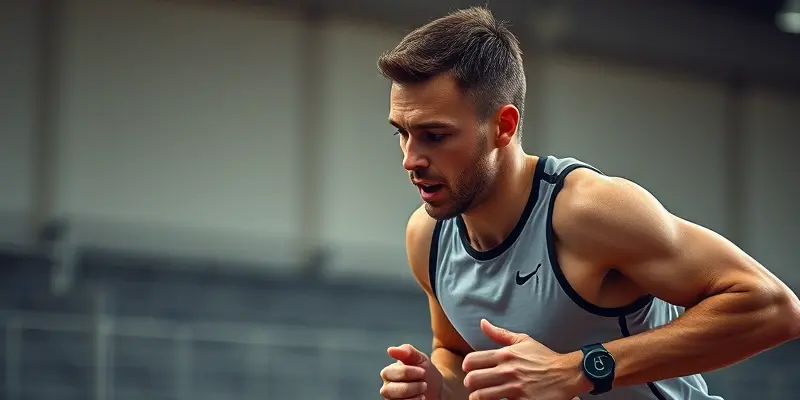Bounce Back Stronger: Essential Mobility Routines and Motivation for Injury Recovery
Staying active is thrilling, but every athlete or fitness enthusiast faces setbacks. Whether you’re a weekend warrior or a seasoned competitor, injury and recovery are part of the journey. The right post-workout routine and mental strategies can not only speed up your return but also help you build resilience for future challenges.
I’m the lead writer at GymPulse and a fitness coach with over 10 years of experience. My mission? To help you stay strong and motivated, even when injury puts you on the sidelines.
The Science of Recovery & Injury: Why Mobility Is Your Secret Weapon
Think of your muscles like elastic bands. After a hard stretch, they need time—and the right moves—to return to normal. Skipping recovery is like putting away a twisted band and expecting it to snap perfectly next time—eventually, it’ll fail.
The most common training-related injuries often stem from muscle tightness, poor joint mobility, or simply overdoing it. Hamstring strains, rolled ankles, and sore hips are all-too-familiar to regular gym-goers.
Luckily, the formula for prevention and quick recovery is straightforward:
- Keep your muscles supple
- Restore full joint movement
- Address minor aches before they turn into major problems
Mobility work ensures your body bounces back and is less likely to get injured again.
Post-Workout Mobility Routine: Simple Moves for Faster Recovery
Five to ten minutes after your workout can make all the difference. Here’s a beginner-friendly mobility routine I recommend to clients at every level:
-
Sumo Squat Hold (1 minute):
-
Deep squat, elbows inside knees, chest up. Feel your hips and glutes open.
-
Dragon Pose (20–30 seconds per side, 2-3 rounds):
-
Low lunge, back knee down. Gently push hips forward to stretch hip flexors and quads.
-
Saddle Pose (1-2 minutes):
-
Sit on your heels, lean back if comfortable, keeping your spine straight. Great for tight thighs and hips.
-
Child’s Pose (30 seconds–1 minute):
-
Knees wide, arms outstretched, forehead on the mat. Let your back and mind relax.
Each move is accessible to beginners—just focus on slow breathing and never force the stretch. Modify as needed; with consistency, stiffness and aches will fade.
Tools and Practical Recovery Tips: Maximizing the Return
Recovery isn’t just about what you do, but how you do it. A few tools can make life easier and speed up your progress.
- Foam Roller: Roll out sore spots for better blood flow and less tension.
- Massage Gun: Perfect for targeting deep knots, but avoid overuse on injured areas.
- Mobility Apps (e.g., pliability): Get guided routines and track your streak—a great digital coach.
Nutrition for Repair
Your body needs fuel to rebuild. After training or injury:
- Protein: Aim for 20–40g within 1–2 hours post-exercise (think chicken, yogurt, or a good protein shake).
- Vitamin C & Zinc: Citrus, berries, lean meats, and seeds help connective tissue heal. For more on this, check out our article on vitamin C immunity athletes.
- Collagen-rich foods: Bone broth or gelatin can support your joints.
- Hydration: Water is crucial for tissue repair. Carry a bottle wherever you go!
Jot down a simple shopping list: eggs, chicken, Greek yogurt, berries, oranges, spinach, sunflower seeds, and bone broth.
Staying Motivated During Rehab: Winning the Mental Game
Injury rehab is tough on the mind. Motivation can slip when you’re used to moving and suddenly you’re stuck resting. How do you keep your spirits up?
- Set Small Goals: Focus on daily or weekly wins, like “improved range of motion” or “10-minute mobility streak.”
- Stick to a Routine: Even a modified schedule maintains the habit loop your mind expects.
- Visualization: Spend time picturing your successful comeback—many top athletes use this trick! Read more about visualization for healing.
- Lean on Support: Share your experience with friends, teammates, or an online community. For example, one GymPulse member set up a group chat for motivation during her ACL rehab—it kept her spirits high and helped her return stronger.
Recovery Is Growth: Your Comeback Story Starts Here
Recovery isn’t a setback—think of it as a springboard. Every injury is a chance to build a wiser, more resilient version of yourself. Patience, consistency, and the right science-backed tools make all the difference.
Have a recovery story or favorite mobility move? Share in the comments below. We’re all in this together—let’s bounce back stronger than ever!
Article researched and written by [Your Name], Lead Content Writer at GymPulse, bringing over a decade of hands-on sport and recovery expertise to the community. All advice combines science-based best practices with real client success stories.

